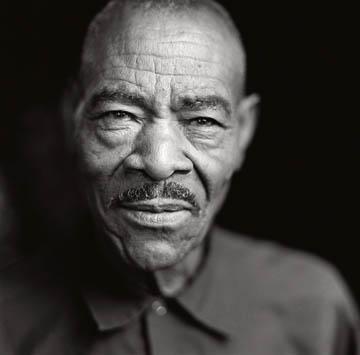- FMA
- The Fabricator
- FABTECH
- Canadian Metalworking
Categories
- Additive Manufacturing
- Aluminum Welding
- Arc Welding
- Assembly and Joining
- Automation and Robotics
- Bending and Forming
- Consumables
- Cutting and Weld Prep
- Electric Vehicles
- En Español
- Finishing
- Hydroforming
- Laser Cutting
- Laser Welding
- Machining
- Manufacturing Software
- Materials Handling
- Metals/Materials
- Oxyfuel Cutting
- Plasma Cutting
- Power Tools
- Punching and Other Holemaking
- Roll Forming
- Safety
- Sawing
- Shearing
- Shop Management
- Testing and Measuring
- Tube and Pipe Fabrication
- Tube and Pipe Production
- Waterjet Cutting
Industry Directory
Webcasts
Podcasts
FAB 40
Advertise
Subscribe
Account Login
Search
Bowie, Frey, Rickman, Vigoda, and Dial—let's not forget Dial
- By Vicki Bell
- January 28, 2016
David Bowie, Glenn Frey, Alan Rickman, Abe Vigoda. Celebrities are falling left and right—some at a relatively early age—and the media, both traditional and social, are covering their deaths and contributions to the arts extensively.
Chances are, unless you are an avid art lover or live in the Southeast, particularly in Alabama or Georgia, you haven’t heard or read about Thornton Dial, an Alabama artist remembered as “extraordinary,” who died January 25 at the age of 87. And that’s a pity.
Writing about Dial’s death for The Atlanta Journal-Constitution, Bo Emerson described Dial as “a self-taught artist from the ‘black belt’ of Alabama” who “worked continuously on his paintings and sculptures, when he wasn’t working at his job fabricating railroad cars.
“But rather than let others see his creations, he used to hide or destroy them. It wasn’t modesty, but a sense of self-preservation that inspired caution. Dial’s work was often political. His paintings and sculptures had an “edge,” and his symbolic commentary on the issues of the day — including civil rights — could have brought retribution.
“‘That sort of edge will let you see the inside of a noose pretty quickly,’ said (Dial’s) friend Paul Arnett.
A 2012 article, also in the AJC, described Dial’s entry into fabricating and how his career facilitated his art, particularly his sculpture. As a youth, Dial “worked a series of blue-collar jobs that enhanced his natural handiness and propensity to transform scavenged items into new ‘things.’ Then he began a long career as a metalworker at a Pullman boxcar factory.
“When those things overflowed the home of his growing family, his wife threatened to leave him if he didn’t dump the ‘junk.’ Even his kids sometimes scratched their heads over what Dad was creating on any given day.”
A discouraged Dial buried many of his early works.
“When you start doing something and don’t nobody pay attention to it, you’ll throw it away, too,” Dial explained during a visit to the High Museum of Art in Atlanta for an exhibition of his work in 2012.
“After coming to light in 1987, Dial’s work would eventually be seen by millions, and collected by major museums, including the Museum of Modern Art in New York; the Whitney Museum of American Art; the Smithsonian American Art Museum; and the High Museum.”
Atlanta also is home to “The Bridge,” a 1997 sculpture by Dial that is located at John Lewis Plaza in the city’s Freedom Park in the Poncey-Highland neighborhood.. The work portrays “Congressman John Lewis’ lifelong quest for civil and human rights” and the community’s “valiant efforts to stop the road (an interchange between eight-lane highways: Interstate 485—now Stone Mountain Freeway—east and west, and Georgia 400 and Interstate 675 north and south) and preserve in-town neighborhoods.”
You can see "The Bridge" and more of Dial’s work here. Musicians and actors aren’t the only artists worth celebrating and remembering. Take a moment and check out the life and work of Thornton Dial. The same creativity and desire to document life, nature, and all things that matter can be found in scores of metal artists, including the talented Josh Welton and Waco (Texas) High School senior Esther Garciapina, who is creating aluminum roses from scrap, thanks to welding classes.subscribe now

The Fabricator is North America's leading magazine for the metal forming and fabricating industry. The magazine delivers the news, technical articles, and case histories that enable fabricators to do their jobs more efficiently. The Fabricator has served the industry since 1970.
start your free subscriptionAbout the Author

Vicki Bell
2135 Point Blvd
Elgin, IL 60123
815-227-8209
- Stay connected from anywhere

Easily access valuable industry resources now with full access to the digital edition of The Fabricator.

Easily access valuable industry resources now with full access to the digital edition of The Welder.

Easily access valuable industry resources now with full access to the digital edition of The Tube and Pipe Journal.
- Podcasting
- Podcast:
- The Fabricator Podcast
- Published:
- 04/16/2024
- Running Time:
- 63:29
In this episode of The Fabricator Podcast, Caleb Chamberlain, co-founder and CEO of OSH Cut, discusses his company’s...
- Trending Articles
How to set a press brake backgauge manually

Capturing, recording equipment inspection data for FMEA

Tips for creating sheet metal tubes with perforations

Are two heads better than one in fiber laser cutting?

Hypertherm Associates implements Rapyuta Robotics AMRs in warehouse

- Industry Events
16th Annual Safety Conference
- April 30 - May 1, 2024
- Elgin,
Pipe and Tube Conference
- May 21 - 22, 2024
- Omaha, NE
World-Class Roll Forming Workshop
- June 5 - 6, 2024
- Louisville, KY
Advanced Laser Application Workshop
- June 25 - 27, 2024
- Novi, MI



























